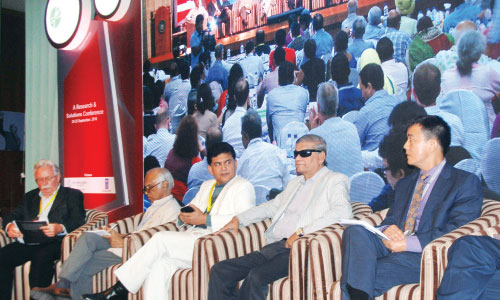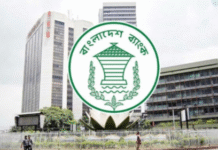The average income of the people living in Dhaka is still much higher than that of the people living in other cities and municipalities, a World Bank-supported new study revealed on Saturday.
The study compared the latest average income of the population living in nine cities and 14 municipalities with the average income of the people living in Dhaka city as was found in a study of 2012.
The study shows that the average income of the people living in the municipality areas was 45 per cent lower than that of the people living in the capital city.
Even, the study shows, the average income of the people living in the port city of Chittagong is 30 per cent lower than that of the people living in Dhaka.
But in Dhaka, the study says, 5.4 per cent households of top income class earning above taka one lakh per month enjoy 39.9 per cent of the total income of the Dhaka’s population.
Extreme poor households in Dhaka city constitute 10.1 per cent and they have an average monthly income of Tk 7,204 while the poor constitute 23.9 per cent population with an average monthly income of Tk 11,294, it says.
Power and Participation Research Centre, a research organisation, in partnership with the Bangladesh Bureau of Statistics, conducted the study on the emerging urban spectrum.
The report of the 2016 study was launched on Saturday, the first day of the two-day international conference on ‘Urban Poverty: Challenges of Perspective and Action’ jointly organised by the PPRC and BBS at the LGED auditorium in capital’s Agargaon.
The study was conducted on 5,600 households of the Dhaka, Chittagong and eight other city corporations and 14 municipalities.
The study findings show that lower middle-class, whose monthly income is between Tk 10, 000 and Tk 25,000, constitutes the majority of the population in all urban centres.
Of the total population in Dhaka, 47 per cent is lower middle-class while they are 56 per cent in Chittagong and 49 per cent in municipality areas, the study also reveals.
It says that urbanisation and population growth in the urban areas have occurred at a dizzying speed in Bangladesh.
Fifty-five years ago, the study says, urban population was barely 2.64 million when today Dhaka alone is a home to nearly 15 million people but overcrowding, unplanned growth and slums have become hallmarks of the urbanisation process.
The study says that the rapid growth of Dhaka’s population is mainly driven by rural-urban migration, of which 70 per cent migrate from villages, 17 per cent from upazila towns and 7 per cent from district towns.
On the first day of the international conference, PPRC executive chairman Hossain Zillur Rahman, sector manager for urban of South Asia Region of World Bank Ming Zhang and executive director of Global Development Institute at University of Manchester David Hulme, among others, presented the keynote speeches.
Source: New Age










